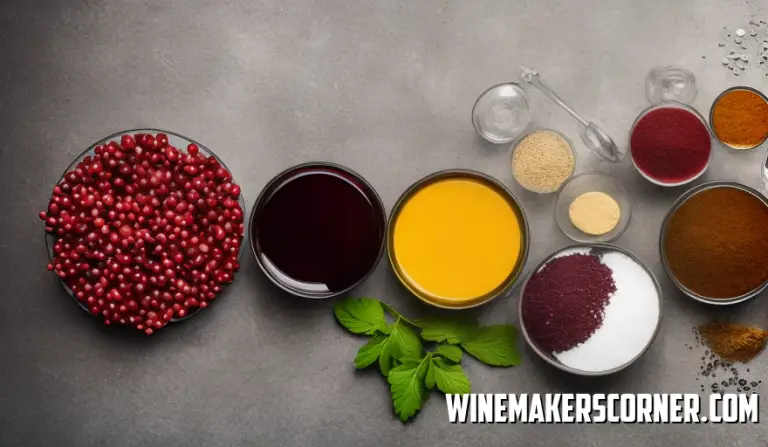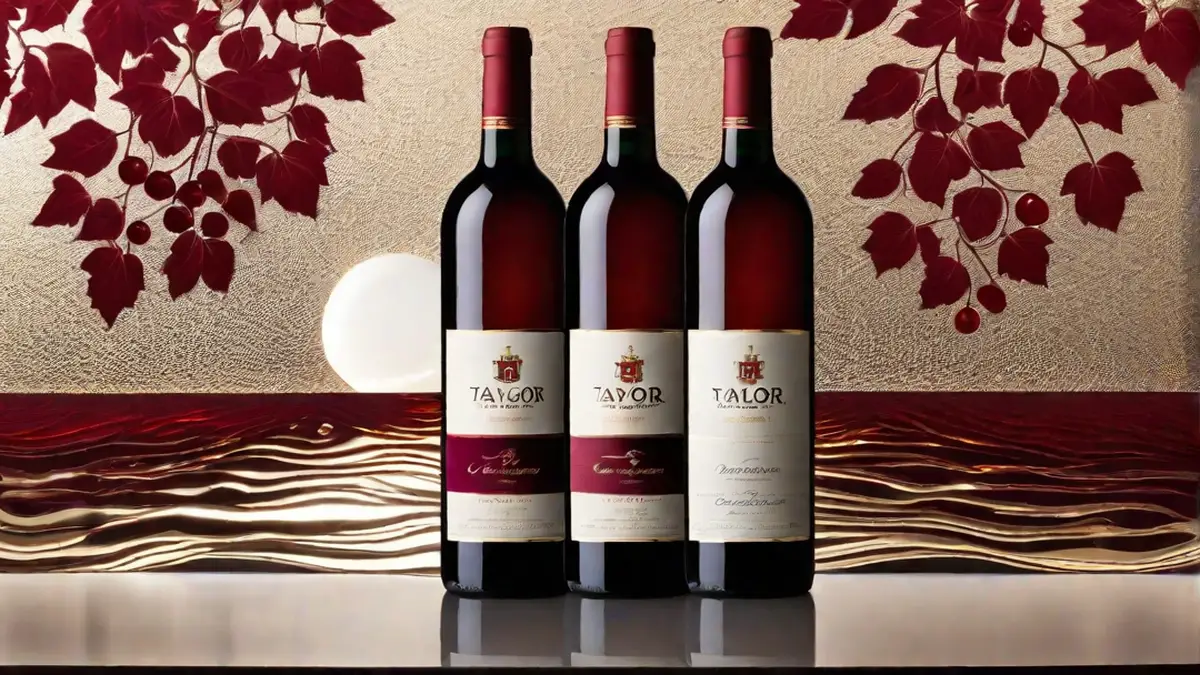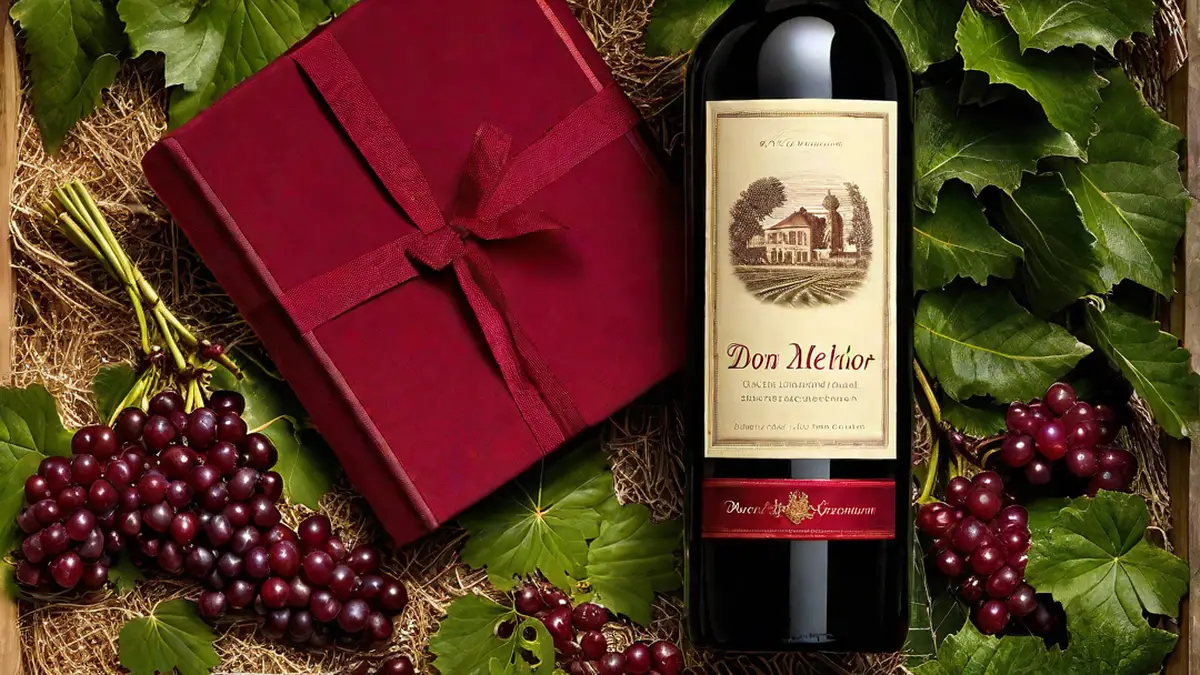Hello wine enthusiasts and aspiring winemakers! Get ready to embark on an age journey. The captivating world of winemaking.. Hold on before you raise an eyebrow at the idea of stomping grapes in your own living room let us introduce you to a contemporary solution; Wine Ingredient Kits. These compact boxes are truly a game changer making the process easier for both beginners and experienced winemakers. Whether its selecting the kit for your taste preferences or understanding how each ingredient contributes to crafting that impeccable bottle of wine we’ve got you covered. So let your curiosity flow and delve into the realm of DIY winemaking with our guide on Wine Ingredient Kit 2.0! Get ready for a journey through vineyards, fermentation techniques, flavor profiles and troubleshooting tips. All achievable, from the comfort of your own kitchen counter!
Understanding the Components of a Wine Ingredient Kit
When it comes to the world of winemaking a wine ingredient kit becomes your companion. It’s like having an all in one toolbox that provides everything you need to craft your bottle of wine. So what does this kit include? Lets dive into the specifics.
Firstly we have grape juice concentrate which serves as the foundation of your wine. Its essence. The concentrate can be derived from grape varieties ranging from robust Cabernet Sauvignon to refreshing Chardonnay. The flavor profile of this concentrate sets the stage for the product.
Next on the list are yeast packets and their role is absolutely crucial! Yeast acts as a catalyst for fermentation by consuming the sugar in grape juice and converting it into alcohol and carbon dioxide. The choice of yeast used can greatly influence the taste and aroma of your wine.
Additives are another component often included in these kits. Although they may not sound particularly exciting they play a role in enhancing flavor and ensuring stability. These additives encompass ingredients such as bentonite (for protein stability) potassium sorbate (to prevent re fermentation) and kieselsol or chitosan (, for clarification purposes).
Lastly some wine kits incorporate oak chips or powder those aiming to recreate the flavors of bold reds or luscious whites that have undergone barrel aging. These additions of oak contribute intricacy and richness, to your wines.
There you go. We’ve just unraveled the secrets behind the various elements that come together to create that exquisite potion we all adore and value; Wine.
Choosing the Right Wine Ingredient Kit for Your Needs
Picking the wine ingredient kit can feel overwhelming especially if you’re new to the world of winemaking. There are many options out there each promising a unique experience. However understanding your preferences and needs can make the selection process much easier.
The first thing to consider is the type of wine you enjoy. Are you more inclined towards reds, whites or rosés? Each type requires ingredients and processes. For example if you’re a fan of red wines like Cabernet Sauvignon or Merlot look for a kit that includes high quality grape juice concentrate from these specific varieties.
Up is complexity. Do you want a wine making experience or are you up for a challenge with intricate steps and techniques? Wine ingredient kits range from sets designed for beginners to more advanced ones that demand careful attention to detail. Choose according to your skill level and willingness to explore.
Also take into account the equipment included in the kit. Basic kits typically provide items such as yeast packets and sanitizing solutions – perfect for those who are just starting their winemaking journey. More comprehensive kits might offer tools like hydrometers or fermentation buckets that come in handy for dedicated hobbyists.
Lastly it’s worth considering customer reviews, before making your purchase decision.
These reviews often offer information about the ingredients, how easy the instructions are to follow and how satisfied users are, with each kit.
To sum up when selecting a wine ingredient kit it’s important to think about your own preferences, skill level and how much you’re willing to invest in equipment. By taking these factors into account you can begin a winemaking adventure that suits your needs perfectly.
Exploring Different Types of Wine Ingredient Kits
Wine ingredient kits are a game changer for people who aspire to make their own wine at home. These kits bring the vineyard experience into your kitchen allowing you to create unique blends without needing any expertise in the field of winemaking. Now lets explore the types of wine kits you can try.
To begin with we have wine kits that usually include grape juice or concentrate from popular varieties like Cabernet Sauvignon or Merlot. Some even offer exotic options such as Malbec or Nebbiolo. If you’re someone who appreciates full bodied wines then these kits are perfect for you.
Moving on to wine kits they often feature renowned varieties like Chardonnay, Sauvignon Blanc and Riesling among others. If you enjoy sipping on an refreshing glass of white wine on a warm summer day then these kits are ideal for you.
What about rosé? Well don’t worry! There are also rosé wine kits that combine the best characteristics of both reds and whites. They provide a blend with the depth of red wines and the lightness of whites – truly something different for those seeking variety.
We shouldn’t forget about dessert wine kits either! These offer an opportunity to create indulgent treats at home – from ice wines to ports and sherries.
Lastly there’s also the fruit wine kit category that includes options, like blueberry Merlot or peach Chardonnay!
If you’re not a fan of grape wines or if you’re simply seeking something enjoyable and fruity this category is worth exploring.
To sum up; Whether its red, white, rosé, dessert or fruit based wine the world of wine ingredient kits offers a range that caters to almost every taste. Each kit provides an experience in both the making and tasting process adding to the excitement.
However it’s important to remember that while these kits simplify winemaking they don’t eliminate the need for patience. Good things come to those who wait. So go ahead. Choose your kit start the process and in just a few weeks time you’ll be raising a glass with your very own homemade vino. Cheers, to that!
The Role of Each Ingredient in Wine Making
When it comes to making wine the process is a blend of art and science. Each ingredient has its special role in creating the delightful aroma, flavor and texture that we experience in the final product. Now lets dive into these essential components.
To start with we have grapes. The ingredient in winemaking. Each variety of grape brings its unique characteristics to the table. Some grapes offer an acidity while others bring forth a luscious sweetness or bold tannins. The ripeness of these grapes during harvest also shapes the wines flavor profile and alcohol content.
Moving on we come across yeast. A microorganism that holds tremendous power in the transformation of grape juice into wine through fermentation. Yeast consumes sugar from the grapes. Produces alcohol and carbon dioxide as by products. Different strains of yeast can even contribute flavors and enticing aromas to the wine.
Now lets talk about water. An underestimated player in winemaking! Although it may not directly impact taste or aroma water significantly influences how other ingredients interact during fermentation.
Next on our list is sulfur dioxide (SO2). This compound is commonly added to wines as an antimicrobial agent. It plays a role, in preventing spoilage and ensuring freshness throughout storage.
Lastly but not least oak barrels are worth mentioning! These barrels add their unique touch to wines by imparting flavors and complexities during aging.
These may not be considered as ingredients but they play a vital role in developing the unique characteristics of wine as it ages. Oak contributes flavors such as vanilla, spice or smokiness.
To sum up every aspect of making wine. From selecting ripened grapes to choosing the right yeast strains. Influences the ultimate character of the wine. A Wine Ingredient Kit 2 would encompass all these components enabling you to have control, over each stage of this captivating process.
Steps to Using Your Wine Ingredient Kit Effectively
Are you embarking on a journey to create your wine? The Wine Ingredient Kit is a first step. It’s not about opening the box and pouring in ingredients; there’s an art and science behind it.
Lets start by unboxing. Open that box with the excitement of a winemaker. Inside you’ll find juice concentrate, yeast, stabilizers and clarifiers – these are your tools.
Now lets familiarize ourselves with them. The juice concentrate is the heart of your wine; it determines its flavor profile and aroma.. Yeast? Well that’s the magic worker! It ferments the sugars into alcohol transforming grape juice into heavenly wine.
Wait! Before rushing to mix everything
Cleaning is crucial! Remember that cleanliness is not just important for godliness but for winemaking. Every container or tool that comes into contact with your brew should be spotless. Even a tiny speck of dirt or unwanted bacteria can spoil your batch.
Once everything is sanitized we can move on to mixing. Pour the juice concentrate into a fermentation vessel and follow the instructions, in your kit for adding water. Then gently sprinkle in the yeast. Give it a good stir.
Now it’s time to wait for fermentation. The yeast will be doing its magic for around 7 14 days at room temperature (around 72F) transforming sugar into alcohol. It’s important to be patient during this phase because the results will be rewarding!
After fermentation the next step is stabilization. You’ll need to add stabilizers from your kit to stop any fermentation and prevent off flavors from developing.
Once stabilization is complete it’s time for clarification. Add the clarifiers from your kit to remove any remaining solids leaving you with wine thats ready for bottling!
Keep in mind that making wine requires both patience and precision, above all else.
When the clarity is ensured carefully bottle the wine. Let it age for at least one month before indulging in a glass of your creation!
These steps may seem intricate. They are definitely worth every moment spent. So are you ready to unleash your winemaker?
Tips for Storing and Maintaining Your Wine Ingredient Kit
Storing and taking care of your wine ingredient kit is essential. It’s not about putting the kit in a cupboard and forgetting about it until you’re ready to use it. Proper storage can have an impact on the quality of the wine you make at home.
Firstly temperature is important. The ideal storage temperature for wine kits falls between 55°F and 75°F. Extreme heat or cold can harm the yeast and other ingredients in the kit, which affects the fermentation process. Therefore it’s best to avoid places like garages or attics that experience temperature changes.
Humidity also plays a role. Dry conditions can cause some ingredients to evaporate especially if they are not properly sealed. On the hand excessively humid conditions may lead to mold growth on packaging materials. Aim for a humidity level ideally around 70%.
Consider exposure as well. Direct sunlight or fluorescent light can degrade ingredients, over time particularly those stored in clear glass or plastic containers. To prevent this from happening store your kit in a place.
Next comes organization. It shouldn’t be underestimated! Keep all related items together to avoid misplacing anything during storage periods. Clearly label everything for identification later on.
Lastly remember that regular checks are crucial too!Make sure to check your stored kits to make sure they are not damaged or showing any signs of spoilage such as mold growth or unusual smells.
By following these guidelines for storing and taking care of your wine ingredient kit you’ll ensure that it stays in condition and is ready, for use when you’re ready to make your next homemade batch of wine!
Troubleshooting Common Issues with Wine Ingredient Kits
Wine ingredient kits offer an opportunity for beginners to explore the world of winemaking. However they do come with their share of challenges. Experienced winemakers can sometimes face perplexing situations when using these kits.
One common challenge is when fermentation doesn’t occur as expected. You follow the instructions add yeast and wait for that transformation but nothing seems to happen. There could be reasons behind this issue. The frequent culprit is temperature inconsistency, which can hinder the yeasts activity. It’s important to ensure that your wine mixture is kept within the temperature range of 70 75 degrees Fahrenheit.
Another problem often encountered is flavors in the final product. This could be caused by sanitation practices during the winemaking process or even low quality ingredients included in the kit itself. To avoid this it’s crucial to sanitize all equipment before use and consider investing in higher quality kits.
Cloudiness in your wine is another issue you might come across. This typically indicates that there are sediment particles, from fruits or other solids used during production. Using fining agents can help clarify your wine quickly but remember; patience often pays off when it comes to winemaking!Lastly there is a possibility of encountering a situation where fermentation gets stuck meaning that the yeast stops working before converting all the sugar into alcohol. This can result in a wine that’s sweet and has a lower alcohol content than expected. The remedy for this issue is to rehydrate yeast and add it back into the mixture.
In summary effectively addressing problems that may arise when working with wine ingredient kits necessitates having a grasp of fundamental winemaking principles and being meticulous, throughout the entire process.




